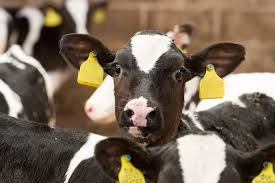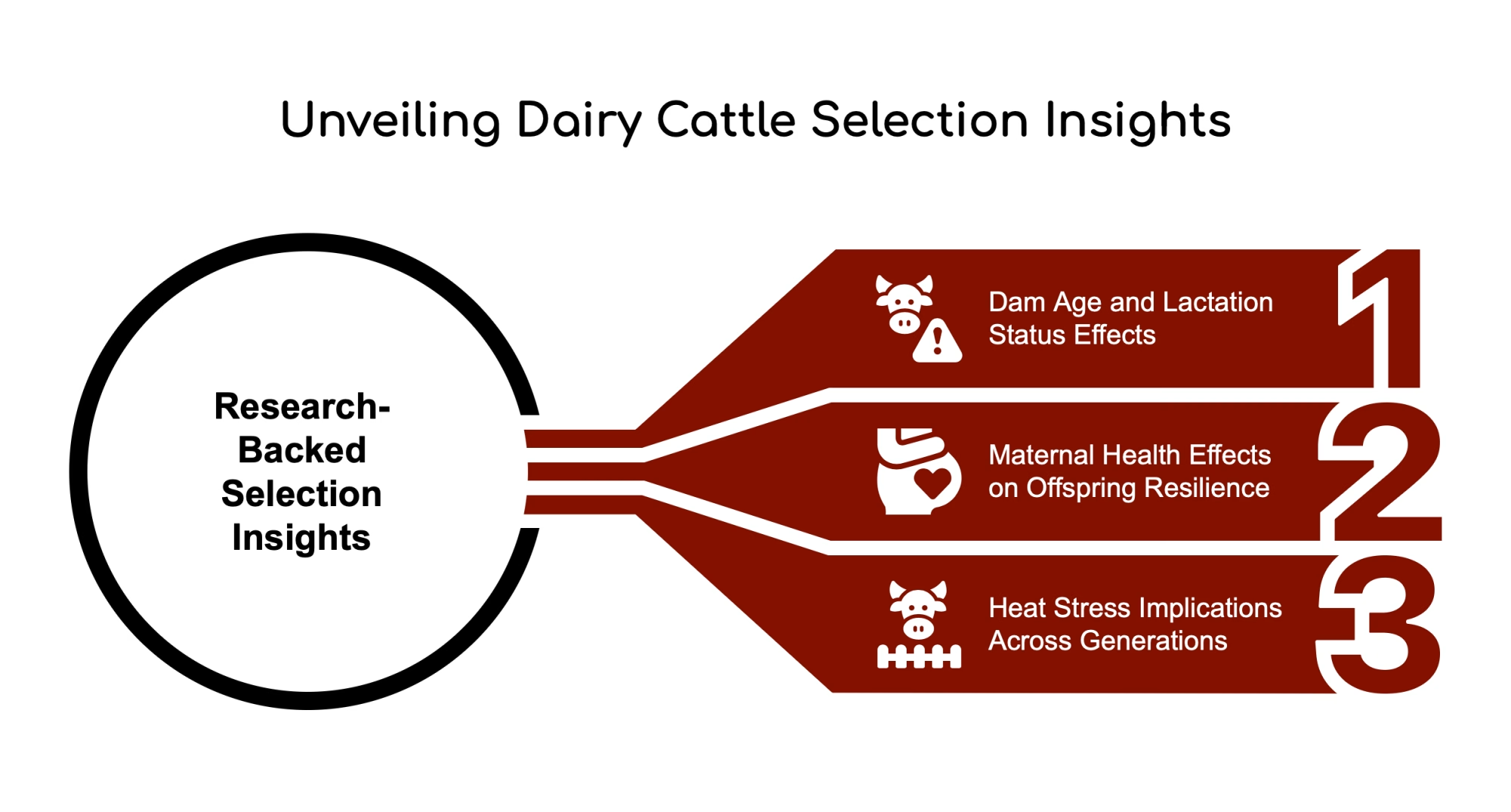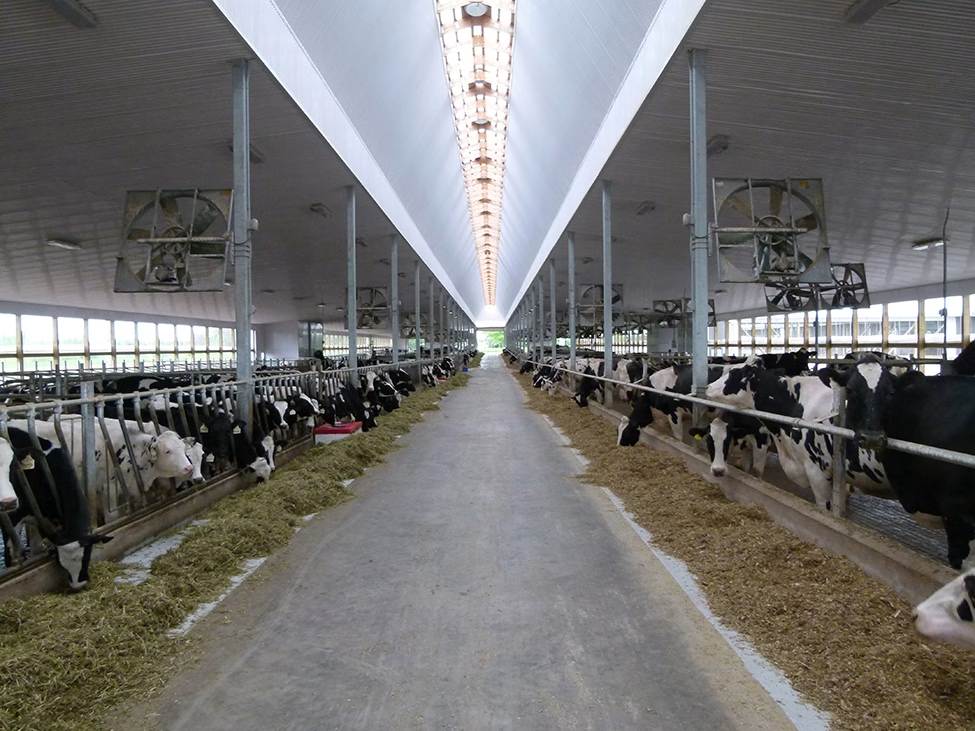Healthy cows ≠ are the best replacements. Discover the $1,200 paradox reshaping heifer selection with heat-stressed dams and genomic breakthroughs.
EXECUTIVE SUMMARY: Record prices for dairy-beef calves demand more brilliant replacement heifer strategies. New research reveals daughters of first-lactation cows and heat-stressed dams outperform traditional picks, challenging conventional culling wisdom. With genomic tools and updated genetic evaluations, producers must balance beef-on-dairy profits against long-term herd potential. Key factors like maternal age, dry-period cooling, and breed-specific responses now dictate ROI, as heat stress costs U.S. dairies $245M annually. This analysis provides actionable tools—including an ROI calculator and audit checklist—to optimize replacement programs amid 2025’s genetic base changes.
KEY TAKEAWAYS:
- Health Paradox: Offspring from dams with pregnancy health challenges show 10% greater disease resilience than those from “healthy” cows
- Multi-Gen Impact: Heat-stressed dry cows reduce milk yield by 5 lbs/day across three generations of offspring
- ROI Shift: First-lactation dam focus + genomic testing can cut replacement costs by $1.87/cwt
- 2025 Essentials: New CDCB genetic weights demand updated selection criteria to avoid $147K losses in 500-cow herds
- Action Now: Implement the 5-minute audit checklist to align with heat stress maps and beef-on-dairy market shifts

The current dairy landscape presents producers with both challenges and opportunities regarding replacement heifer decisions. With record prices for dairy-beef crossbred calves and rising costs for quality replacements, today’s dairy farmers need to be more strategic than ever about which heifers they develop and which they market. The following analysis examines the latest research and expert recommendations for making critical investment decisions that directly impact herd genetics, production efficiency, and your bottom line.
The Economics of Replacement Decisions

The dairy industry is experiencing a notable shift in heifer management strategies, primarily driven by economic forces. Record prices for dairy-beef crossbred calves have made using beef genetics on lower-ranking dairy females increasingly attractive, creating a valuable cash flow opportunity. This trend has gained significant momentum across the country.
This market reality requires producers to think more carefully about which females will become the mothers of the next generation of replacement heifers. The decision is no longer just about producing enough replacements but ensuring they are genetically superior and worth the investment to raise them to first lactation.
The Financial Stakes
The financial aspects of replacement decisions extend beyond simply meeting inventory needs. With the exceptional market value of steers and heifers in the current climate, dairy producers must carefully evaluate the economic impact of their replacement strategies. Each heifer retained for breeding represents the direct costs of raising her to production age and the opportunity cost of not selling her into a favorable market.
According to a 2024 study by CanFax, the cost of raising replacement heifers varies significantly across farms. Low-cost producers spend an average of $866 per heifer, while high-cost producers invest up to $1,028. This difference in development costs can lead to dramatically different payback periods. Low-cost producers may see their investment recovered in as little as 5 years, while high-cost producers might struggle to recoup their investment within the heifer’s productive lifespan.
Any delay past 24 months in age at first calving will add an additional $2.50 or more per day to the cost of raising replacements and require more heifers to meet the herd’s replacement needs. This economic reality has pushed producers to become more disciplined in their selection process, focusing on identifying and developing only those heifers that truly represent genetic advancement for their herds.
The Science-Based Selection Process

Creating an effective replacement strategy begins with a systematic evaluation of potential dams and the resulting heifer calves. This multifaceted approach combines genetic assessment with critical health and developmental factors.
Genetic Ranking as the Foundation
The cornerstone of any successful replacement program is a comprehensive genetic ranking of the herd. This crucial step identifies which cows should become the mothers of future replacements. Modern dairy producers have access to sophisticated genomic tools that can predict with increasing accuracy which females will contribute the most valuable genetic traits to the next generation.
A 2025 study in New Zealand demonstrated the power of genomic selection (GS) in identifying superior cows. Implementing GS and using sex-selected semen on top-ranked cows led to significant genetic gains. The Balanced Performance Index (BPI) of heifers increased from 136 to 184 between 2021 and 2023, corresponding to a financial gain of NZD 17.53 per animal per year. The study projects that in 2026, the BPI could reach 384, resulting in a potential economic gain of NZD 72.96 per animal.
The benefits of genomic selection for replacement heifers are substantial, especially when more heifers are available than needed. Research shows that genomic selection is beneficial in most scenarios for current genotyping prices, provided at least two more heifers are available than needed.
Critical Health Factors Beyond Genetics
While genetics provides the foundation, health factors significantly impact a heifer’s development and future productivity. Even heifers with excellent genetic potential will be limited if they don’t receive adequate and timely colostrum. This first nutritional milestone establishes immune function that will influence health throughout the animal’s life.
Respiratory health is another critical factor in selection decisions. Heifers with recurring respiratory problems typically show compromised performance throughout their lives, making them prime candidates for strategic marketing rather than retention as replacements.
Research-Backed Selection Insights

Recent research studies provide valuable guidance for making more informed replacement decisions. These findings offer evidence-based criteria that go beyond traditional selection approaches.
Dam Age and Lactation Status Effects
A 2021 New Zealand study revealed that daughters of older dams (at least 9 years old) produced less milk than those from younger cows. This finding aligns with the understanding that genetic progress continues generation by generation, making younger animals genetically superior to older ones in most herds.
Perhaps more surprisingly, a 2020 University of Florida study found significant advantages for daughters of first-lactation (primiparous) cows. These advantages included lower death loss rates during the heifer rearing period, earlier pregnancy, reduced pregnancy loss (about 5% less), earlier calving, and lower incidence of clinical diseases during first lactation.
Maternal Health Effects on Offspring Resilience
The same University of Florida study produced a counterintuitive finding regarding maternal health during pregnancy. Daughters of cows that experienced clinical diseases during pregnancy showed greater resilience to health challenges as heifers and first-lactation cows. These offspring experienced a lower incidence of clinical disease than daughters of healthy cows, with researchers theorizing that altered uterine conditions during pregnancy may have enhanced these animals’ ability to withstand health challenges later in life.
This research suggests that replacements from first-lactation cows and from older cows that experienced health challenges during pregnancy may be preferable to those from healthy, older cows.
Heat Stress Implications Across Generations
Heat stress during the dry period has significant and lasting consequences across generations. Research from the University of Florida revealed that daughters of heat-stressed dry cows produced approximately 5 pounds less milk per day, on average, during their first three lactations compared to heifers from properly cooled dams. Even more remarkably, this production deficit extended to granddaughters of heat-stressed cows.
This trans-generational effect suggests that heifers born to cows that experienced significant heat stress during their dry periods should be considered candidates for culling when inventory adjustments are needed. The long-term production impact makes these animals less valuable as replacements despite what might otherwise be favorable genetics.
A 2025 study from the University of Illinois Urbana-Champaign confirms that heat stress leads to a 1% annual decline in milk yield across U.S. dairy farms. This translates to approximately 1.4 billion pounds of milk lost over five years, amounting to roughly $245 million in revenue losses. Smaller farms with fewer than 100 cows experience the most significant impact, losing an average of 1.6% of their annual milk yield.
Modern Approaches to Heifer Development

Beyond selection criteria, how heifers are developed significantly impacts their future productivity and the return on investment they provide.
Targeted Growth and Body Condition Management
Research on heifer development emphasizes targeting optimal growth rates. Studies have demonstrated that increasing nutrient intake in pre-weaned calves increases lactation milk yield. Calves fed for more significant pre-weaned average daily gain (ADG) were twice as likely to have greater milk yield in the first lactation. For every one pound of pre-weaning ADG, the first lactation cow milk yield increased by 1,550 pounds.
First, lactation cows who weighed 94% of the herd’s mature body weight at 30 days in milk (DIM) produced 11 to 12 pounds more milk per cow per day than lighter first lactation cows weighing 75% of the herd’s mature body weight. This is particularly significant considering that first-lactation cows account for 38-40% of the milking herd, and many cows complete three or fewer lactations.
Age Considerations in Breeding Decisions
Age remains a significant factor in breeding success. Older heifers typically reach puberty earlier, increasing their likelihood of experiencing multiple estrus cycles before the breeding season begins. These additional cycles improve first-service conception rates and lifetime productivity.
Numerous studies recommend the optimal age at first calving (AFC) is 22-25 months. When sorting through replacement candidates, age should be considered alongside genetic merit and health history as part of a comprehensive evaluation.
Strategic Implementation for Today’s Dairy Operations

Implementing these research findings requires a systematic approach tailored to individual farm goals and market conditions.
Setting Clear Herd Replacement Targets
The foundation of effective replacement management is establishing clear targets for the number of new animals needed to maintain an ideal herd inventory. This calculation must account for voluntary and involuntary culling rates while considering genetic advancement goals. With these targets in mind, producers can more strategically allocate beef and dairy genetics across the herd.
Balancing Beef-on-Dairy Opportunities
The beef-on-dairy trend continues to gain momentum, with producers becoming increasingly sophisticated in their approach. This thoughtfulness includes selecting beef sires based on specific market demands and regional expectations.
The financial benefits of beef-on-dairy breeding have been significant, with producers generally satisfied with the premiums received for crossbred calves. However, there’s growing recognition that maintaining these premiums requires attention to beef industry expectations regarding carcass quality and consistency.
Aligning with 2025 Genetic Evaluation Changes
The April 2025 genetic base change will significantly impact producers’ evaluation of potential replacements. According to the Council on Dairy Cattle Breeding (CDCB), the Holstein base will roll back 51 pounds for butterfat and 36 pounds for protein. This represents a dramatic acceleration compared to earlier periods—in 2015, the Holstein base rolled back just 17 pounds for butterfat and 12 pounds for protein.
These changes reflect current market conditions and production economics. Producers who maintain rigid selection thresholds without adapting to these changes risk significant economic losses—potentially up to $147,000 over five years for a 500-cow herd. Additionally, excessive inbreeding due to narrow selection criteria costs approximately $23 per cow yearly for each 1% increase in relatedness.
Breed-Specific Considerations

Research from the University of Wisconsin demonstrates that Holstein and Jersey breeds respond differently to maternal factors. While heat stress reduces milk production in both breeds, Jerseys show approximately 15% less production loss than Holsteins under similar conditions. However, Jersey offspring from first-lactation dams show a more pronounced advantage (7% higher lifetime production) than Holstein counterparts (4% advantage).
A 2024 study comparing Holstein and Jersey breeds found that Jersey cows produced milk with significantly higher fat content (23.85% higher), protein content (26.03% higher), and casein content (26.32% higher) compared to Holstein cows. However, Holstein cows produced a higher volume of milk, with an average daily production of 34.52 kg compared to 24.78 kilograms of Jersey cows.
Real-World Success: Willow Creek Dairy
Wisconsin’s Willow Creek Dairy implemented these research-based selection strategies in 2021, reducing its replacement inventory by 22% while maintaining production levels. Owner Mark Jensen reports: “By focusing on daughters from first-lactation cows and implementing aggressive heat abatement for our dry cows, we’ve seen a $1.87 per hundredweight improvement in our production costs. The genomic testing investment pays for itself many times over.”
Challenging Convention: The Health Paradox
While conventional wisdom suggests that healthy dams produce the best replacements, recent research challenges this assumption. Dr. Sarah Thompson, a leading dairy geneticist, argues, “Our studies show that offspring from cows that experienced health challenges during pregnancy often display enhanced resilience to various stressors throughout their lives. This ‘health paradox’ forces us to reconsider traditional culling criteria.”
However, a prominent veterinarian, Dr. John Anderson, cautions, “While the data on offspring resilience is intriguing, we must balance this against the dam’s immediate welfare and production concerns. Healthy cows remain crucial for overall herd performance and longevity.”
The Bottom Line
The economics of replacement heifer investment have never been more complex or consequential for dairy operations. Today’s market realities—including record prices for replacements and dairy-beef crossbreds—demand a more strategic and data-driven approach to heifer selection and development.
While genetic ranking remains the foundation of replacement decisions, research increasingly demonstrates the importance of factors beyond genetics. Maternal age, lactation number, health during pregnancy, and environmental conditions like heat stress significantly impact a heifer’s future productivity and value as a replacement.
For dairy producers navigating these decisions, the goal should be to create a balanced strategy that maintains genetic progress while capitalizing on alternative market opportunities. By implementing the selection criteria and management practices outlined in this analysis, producers can ensure they’re investing in replacement heifers that genuinely represent value for their operations, both genetically and economically.
Why This Matters For Your Operation
With first-lactation cows representing nearly 40% of your milking herd and many animals completing three or fewer lactations, the quality of your replacement program directly impacts half your herd’s productive life. The decisions you make today about which heifers to develop will shape your operation’s genetic progress, production efficiency, and profitability for years to come.
As we approach the 2025 genetic base change, now is the time to audit your replacement selection criteria and adapt your strategies to align with changing economic realities and genetic evaluations. The most successful operations will be those that balance genetic advancement with market opportunities, using evidence-based selection criteria to identify valuable replacements while capitalizing on strong markets for animals that don’t meet increasingly stringent selection standards.
5-Minute Replacement Program Audit Checklist
To help you quickly assess and improve your current replacement program, use this 5-minute audit checklist:
- Genetic Evaluation:
□ Are you using genomic testing to identify top genetic merit heifers?
□ Have you updated your selection criteria to align with the 2025 genetic base changes? - Health and Development:
□ Do you have protocols to ensure adequate colostrum intake for all calves?
□ Are you tracking and addressing recurring respiratory issues in your heifers? - Growth Targets:
□ Are your heifers reaching 94% of mature body weight by 30 days in milk?
□ Is your average age at first calving between 22-25 months? - Heat Stress Mitigation:
□ Do you have effective cooling systems in place for dry cows?
□ Are you considering the heat stress history of dams when selecting replacements? - Economic Analysis:
□ Have you calculated your actual cost of raising replacements recently?
□ Are you regularly evaluating the opportunity cost of retaining vs. selling heifers?
By regularly reviewing and updating your replacement program using this checklist, you can ensure that your strategy remains aligned with the dairy industry’s latest research and economic realities.
 Download “The Ultimate Dairy Breeders Guide to Beef on Dairy Integration” Now!
Download “The Ultimate Dairy Breeders Guide to Beef on Dairy Integration” Now!
Are you eager to discover the benefits of integrating beef genetics into your dairy herd? “The Ultimate Dairy Breeders Guide to Beef on Dairy Integration” is your key to enhancing productivity and profitability. This guide is explicitly designed for progressive dairy breeders, from choosing the best beef breeds for dairy integration to advanced genetic selection tips. Get practical management practices to elevate your breeding program. Understand the use of proven beef sires, from selection to offspring performance. Gain actionable insights through expert advice and real-world case studies. Learn about marketing, financial planning, and market assessment to maximize profitability. Dive into the world of beef-on-dairy integration. Leverage the latest genetic tools and technologies to enhance your livestock quality. By the end of this guide, you’ll make informed decisions, boost farm efficiency, and effectively diversify your business. Embark on this journey with us and unlock the full potential of your dairy herd with beef-on-dairy integration. Get Started!
Read more:
- Dairy Heifer Shortage May Limit U.S. Milk Production
- Dairy Heifer Shortage Deepens as Beef-Cross Calves Gain Market Share
- Why Are Dairy Farmers Desperately Holding onto Their Cows in 2024? Uncover the Truth
 Join the Revolution!
Join the Revolution!
Join over 30,000 successful dairy professionals who rely on Bullvine Daily for their competitive edge. Delivered directly to your inbox each week, our exclusive industry insights help you make smarter decisions while saving precious hours every week. Never miss critical updates on milk production trends, breakthrough technologies, and profit-boosting strategies that top producers are already implementing. Subscribe now to transform your dairy operation’s efficiency and profitability—your future success is just one click away.








 Join the Revolution!
Join the Revolution!




